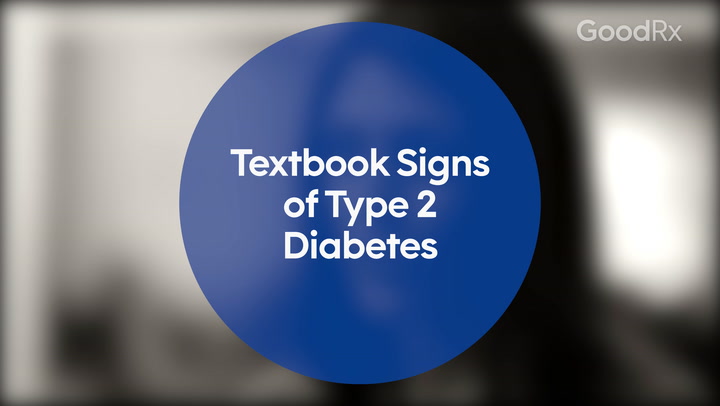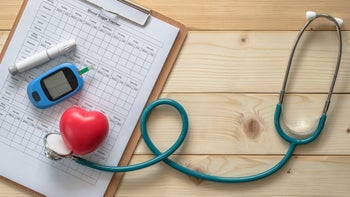
What Is Insulin Resistance? Symptoms, Causes, and Diet for Reversal
Key takeaways:
Insulin resistance happens when your body doesn’t respond appropriately to insulin. This can lead to high blood sugar levels.
Insulin resistance can lead to chronic health conditions like diabetes, coronary artery disease, and metabolic syndrome. But it doesn’t always cause symptoms.
Insulin resistance is reversible with exercise, diet, weight loss, and sometimes medications.
The body naturally produces insulin to help keep blood sugar (also called “glucose”) within safe levels. But sometimes, your body doesn’t respond to the effects of insulin. When this happens, it’s called insulin resistance.
Here, we’ll discuss what insulin resistance is, how it can cause complications like Type 2 diabetes, and how you can prevent (or even reverse) it with lifestyle changes.
What is insulin resistance?
Insulin resistance happens when your body’s cells become resistant to the effects of insulin. When this happens, your body is no longer able to regulate its energy supply. This leads to a domino effect that looks something like this:
Glucose doesn’t get into your cells, where it’s needed for energy.
Instead of being stored for later, extra glucose starts to pile up in your blood.
The pancreas tries to fix this by releasing more insulin, in an attempt to process the excess glucose.
Eventually, the pancreas can’t keep up, and blood glucose levels continue to rise unchecked.
Save on popular GLP-1 Agonists
Take control of your health. With GoodRx, you may be eligible to save even more on popular treatments.

The health complications of insulin resistance are due to the combination of high blood glucose and high insulin levels.
What exactly is insulin?
Insulin is a hormone that regulates metabolism. More specifically, it helps your body balance its main source of energy: glucose. Here’s how it works:
Insulin is made by an organ called the pancreas, which sits behind your stomach. The pancreas releases insulin into your bloodstream after you eat or when your blood glucose levels are high.
The burst of insulin sends the glucose you’ve just absorbed from your meal into cells, where it’s needed for fuel. Any extra glucose is stored in muscle cells for later.
Both of these insulin functions (fueling your cells and storing leftovers) help keep glucose levels steady in your blood.
When this system is working properly, your blood glucose levels stay within a healthy range all day, whether you’ve just eaten or not.
What causes insulin resistance?
The exact cause of insulin resistance isn’t fully known. But there are many things that can increase a person’s risk, including stress and PCOS.
Some of the most common risk factors include:
Having a body mass index (BMI) that’s considered overweight or obese, especially with excess abdominal (belly) fat
Being part of a Black, Asian, or Hispanic ethnic groups
Having a family history of insulin resistance or diabetes
Having diabetes in pregnancy (gestational diabetes)
Having polycystic ovary syndrome (PCOS)
Eating a diet high in carbohydrates or sugar
A sedentary lifestyle
Having a high blood pressure, heart disease, or a history of stroke
Having abnormal cholesterol levels
Taking steroid medications
Living with chronic stress
Exercise can help improve insulin resistance. These exercises lower blood sugar and improve your energy levels.
Did you know that some common medications can raise your blood sugar? Here are common prescriptions that can cause hyperglycemia (high blood sugar).
Polycystic ovary syndrome (PCOS) is a common cause of insulin resistance. This dietary advice can help regulate hormones and ease PCOS symptoms.
What are the signs and symptoms of insulin resistance?
In the early stages of insulin resistance, there are usually no symptoms. But over time, the combination of high blood glucose, high insulin levels, and insulin resistance can lead to complications in multiple body systems.
The symptoms someone has will largely depend on what’s causing their insulin resistance and what health issues develop because of it.
Some people may have one or more of these subtle signs:
Excessive body hair (hirsutism)
Dark, thick patches of skin in skin folds or creases (acanthosis nigricans)
As glucose levels build up in the blood, your body responds by trying to remove it. It tries to store it in your liver and muscles. And then your body stores it as body fat. This is why weight gain can also be a sign of insulin resistance.
If you have experienced any of these symptoms, speak with a healthcare professional. They can help determine if you need to be checked for signs of insulin resistance.
What are the complications of insulin resistance?
Even though insulin resistance often has no early symptoms, it can affect your body in many serious ways. Most importantly, it’s a main cause of:
Type 2 diabetes
Weight gain
Coronary artery disease
Metabolic syndrome
This is one of the most severe complications of insulin resistance. Metabolic syndrome is a chronic condition that includes:
High cholesterol
High blood pressure
High blood glucose levels (which can lead to prediabetes and Type 2 diabetes)
Excess body fat around your waist
Metabolic syndrome involves many different body systems and can cause health problems like heart disease, diabetes, and stroke.
Prediabetes and Type 2 diabetes
Prediabetes and Type 2 diabetes develop when high blood glucose levels persist over time. You can have blood glucose that’s higher than what’s considered safe and have no symptoms. This is often the case if you have prediabetes. In the U.S., roughly 4 in 10 adults over the age of 18 have prediabetes.
If left untreated, prediabetes can progress to Type 2 diabetes. Type 2 diabetes is diagnosed when blood glucose levels go even higher than in prediabetes.
Prediabetes and Type 2 diabetes are especially serious effects of insulin resistance. That’s because they increase your risk of complications, including:
Heart disease
Heart attack
Stroke
Kidney damage
Eye damage
Nerve damage
Is there a test to diagnose insulin resistance?
Unfortunately, there isn’t a simple test to screen for insulin resistance. But healthcare professionals can use a blood glucose test or a hemoglobin A1C test to check if you’re at risk for prediabetes or Type 2 diabetes.
In the early stages of insulin resistance, blood sugar levels may still appear normal. This means blood glucose or hemoglobin A1C tests aren’t always a reliable test of insulin resistance. Instead, your healthcare team will look at a mix of your symptoms, blood test results, and a physical exam to determine if you’re showing signs of insulin resistance.
Some signs that may lead a healthcare professional to consider insulin resistance include:
A larger waist circumference
Elevated fasting glucose or A1C
High low-density lipoprotein (LDL), triglycerides, or total cholesterol
High blood pressure
Elevated fasting insulin levels (rarely tested outside of research)
Skin changes (like dark patches, rashes, or thickened skin)
Symptoms of polycystic ovary syndrome (PCOS)
Can you reverse insulin resistance?
Yes. On the bright side, lifestyle changes can help improve insulin sensitivity — and may even reverse its effects.
Insulin resistance and diet
Carefully choosing what you include in your diet is an important way to help with insulin resistance and to avoid high blood sugar. The American Diabetes Association (ADA) often recommends talking with a professional, like a dietician, to improve your eating habits if you have prediabetes or diabetes.
Diets that are high in protein and low in carbohydrates are recommended. That’s because protein helps keep your blood glucose levels stable. High-carbohydrate diets can cause spikes in blood glucose levels that only make insulin resistance worse.
Having insulin resistance doesn’t necessarily mean you have diabetes, but following a meal plan recommended by the ADA can help improve insulin sensitivity.
If you’re eating to reduce your insulin resistance, stick to a diet that’s high in protein and low in sugar. This can include foods like:
Meats, poultry (like chicken and eggs), and fish
Low-fat dairy products (like low-fat yogurt and cheese)
Nuts
Vegetables
Whole grains
Insulin resistance and weight loss
Managing your weight through exercise and a nutritious diet can help your body respond better to insulin. Even small changes can help reverse insulin resistance. If you continue these habits over time, you can prevent or delay diabetes.
Here are some helpful goals for losing weight and lowering insulin resistance:
Engage in at least 30 minutes of physical activity most days of the week. Exercise is one of the fastest and most effective ways to reverse insulin resistance.
Eat a balanced diet that focuses on vegetables, proteins, and low-fat dairy. Moderating your carb intake can help with both weight management and insulin resistance.
Belly fat is closely linked to insulin resistance and heart disease. Losing weight around your abdomen not only improves insulin sensitivity but also lowers your risk of heart disease. Avoiding a sedentary lifestyle and engaging in consistent exercise has been shown to decrease excess weight in the midsection.
Keep in mind that many “fad diets” promote losing weight quickly through diet or exercise patterns that aren’t sustainable. The best way to lower your risk of insulin resistance is by making small, consistent changes in your diet and exercise regimen that you can stick with for the long run.
Frequently asked questions
Insulin resistance isn’t exactly the same as having diabetes. But insulin resistance could lead to prediabetes and Type 2 diabetes. It does this by raising your blood glucose levels, increasing insulin levels, and causing weight gain.
You might not notice that you feel any different. Or you may feel more tired than usual. Some people may notice weight gain or have a harder time staying at a comfortable weight. Women may notice that they have irregular periods. And some people may notice early signs of diabetes, like frequent urination or fatigue.
There are no medications specifically for insulin resistance. But the best way to treat it is with a low-carb and high-protein diet, regular physical activity, and keeping your weight in a healthy range.
There may be some situations where medications are helpful, depending on the underlying cause of your insulin resistance or if you have other medical problems. Medications that may be used include metformin, statins, and weight-loss or blood pressure medications.
When insulin resistance is reversing or improving, you may notice:
The need to take less insulin
Better blood sugar control
More regular menstrual cycles
Improved skin color and less hirsutism
Improved blood pressure
Better cholesterol levels
More energy
Weight loss
These changes may take weeks, months, or even years. But sticking with a nutritious eating plan and exercise will improve your overall health.
There’s limited evidence that supplements improve insulin resistance. But some supplements are potentially helpful and are generally considered safe when taken at recommended doses::
Berberine
Chromium
Cinnamon
Magnesium
Vitamin D
Remember to tell your healthcare team before starting any medications or supplements. Some may interfere with your other medications.
The bottom line
Insulin resistance causes high blood glucose levels and high insulin levels. You may not have symptoms in the early stages. But over time, these changes can lead to serious health complications and increase your risk of heart disease, stroke, Type 2 diabetes, and more.
The best way to prevent or reverse insulin resistance is to eat a low-carb diet and exercise regularly. In some cases, medications are used to treat insulin resistance and lower your blood glucose levels as well. Maintaining a comfortable weight through small, consistent lifestyle changes is one of the best ways to prevent complications.
Why trust our experts?


References
Alvarez, S., et al. (2023). Prediabetes. StatPearls.
American Diabetes Association. (n.d.). Meal planning.
American Diabetes Association. (n.d.). Understanding diabetes diagnosis.
American Diabetes Association. (2020). 11. Microvascular complications and foot care: Standards of medical care in diabetes—2021. Diabetes Care.
Centeno, A. G., et al. (2003). Correlation between menstruation disorders and insulin resistance. Ginecología y Obstetricia de México.
Centers for Disease Control and Prevention. (2024). About insulin resistance and type 2 diabetes.
Evert, A. B., et al. (2019). Nutrition therapy for adults with diabetes or prediabetes: A consensus report. Diabetes Care.
Familydoctor.org. (2025). Insulin resistance | Symptoms and treatment.
Kauh, E. A., et al. (2011). Short-term metabolic effects of prednisone administration in healthy subjects. Diabetes, Obesity & Metabolism.
Koh, Y. K., et al. (2016). Acanthosis nigricans as a clinical predictor of insulin resistance in obese children. Pediatric Gastroenterology, Hepatology & Nutrition.
Kolb, H., et al. (2020). Insulin: Too much of a good thing is bad. BMC Medicine.
Moore, J. X., et al. (2017). Metabolic syndrome prevalence by race/ethnicity and sex in the United States, National Health and Nutrition Examination Survey, 1988–2012. Preventing Chronic Disease Public Health Research, Practice, and Policy.
National Center for Complementary and Integrative Health. Diabetes and dietary supplements: What you need to know. National Institutes of Health.
National Institute of Diabetes and Digestive and Kidney Diseases. (2025). Insulin resistance & prediabetes. National Institutes of Health.
Paley, C. A., et al. (2018). Abdominal obesity and metabolic syndrome: Exercise as medicine? BMC Sports Science, Medicine and Rehabilitation.
Talaei, A., et al. (2013). Idiopathic hirsutism and insulin resistance. International Journal of Endocrinology.

























